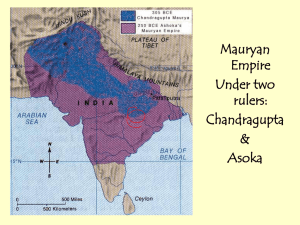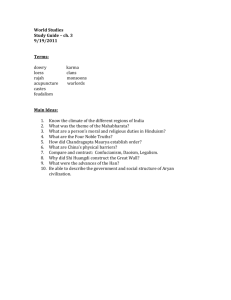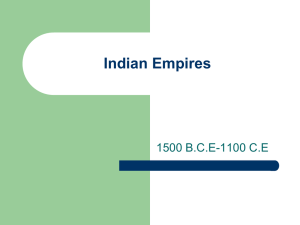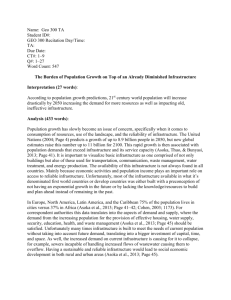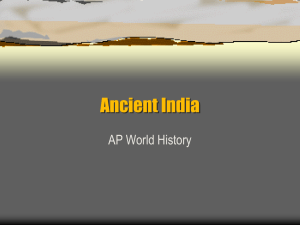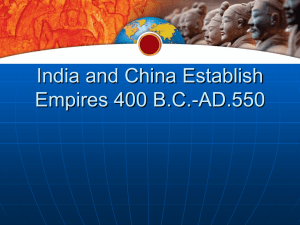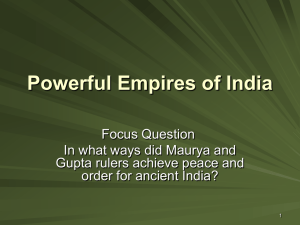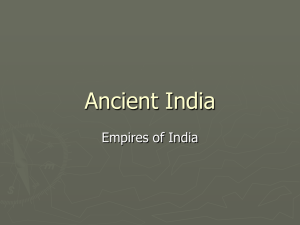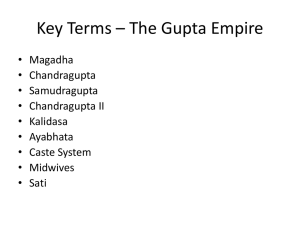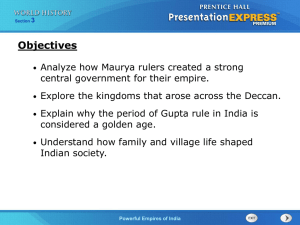The Maurya Empire
advertisement
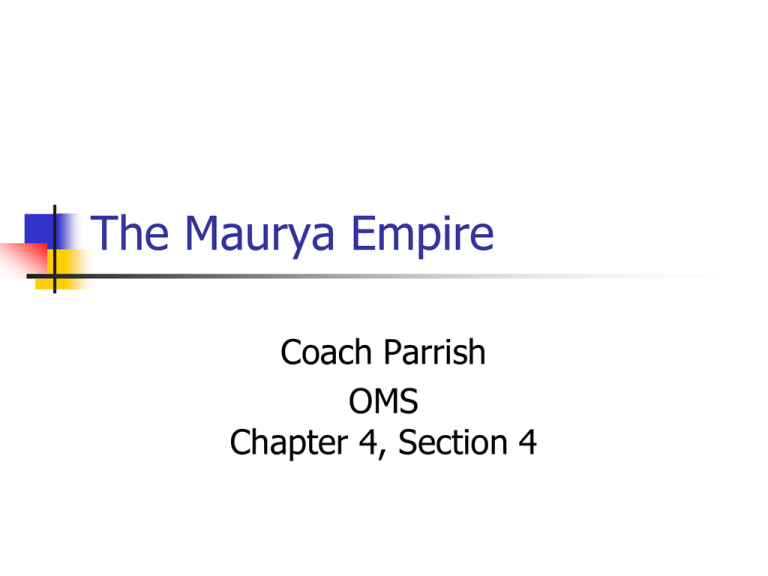
The Maurya Empire Coach Parrish OMS Chapter 4, Section 4 Maurya’s Founding In 321 BC, a new ruler came to power in a kingdom in India. Within 35 years, the tiny kingdom grew into the Maurya Empire. The ruler’s name was Chandragupta. Rise of the Maurya Empire Before the Maurya Empire, India was divided into several warring states. After Chandragupta took over, his army conquered most of northern and central India. Absolute Rule Chandragupta ruled with absolute power over every aspect of his empire. He commanded a huge army that he used for invasion and putting down revolts. His army also had 9000 war elephants that struck fear in his enemies. Absolute Rule, cont. 1. 2. As his rule continued, he became fearful for his life. He did two things for protection: He made his servants taste his food for fear of poisoning. He also slept in a different room every night to keep his enemies off guard. Chandragupta’s Legacy Chandragupta used the wealth he received during his rule to improve the empire. New irrigation systems brought water to farmers. He also built roads and increased trade. Chanrdagupta’s Legacy cont. Asoka’s Leadership Chandragupta passed the leadership to his son. When his son died, leadership of the Maurya Empire passed to Asoka (Chandragupta’s grandson). After he left the throne to his son he led an extremely ascetic (holy) life. He eventually starved himself to death while fasting. Asoka extended the empire and was the largest India had ever seen. Maurya Empire Under Asoka the Great Battle of Kalinga For 35 years, Asoka ruled the empire. During his first year, he conquered new territories. In 261 BC, he led his army south into the state of Kalinga. The battle killed thousands and was a turning point for Asoka. After the battle, Asoka freed his prisoners and converted to Buddhism. Buddhist Ruler Asoka practiced and preached Buddhism. He didn’t allow sacrifices of animals and gave up hunting. He built hospitals and built wells every mile along the roads for thirsty travelers. Asoka issued various writings on moral advice. Some urged people to honor their parents, and some urged tolerance – freedom from prejudice. His advice was carved on stone pillars. Asoka’s Legacy Buddhism Outside of India Asoka practiced religious tolerance toward the Hindus. During his rule, many teaching of Buddhism became part of Hinduism. He sent missionaries far and wide. When he died, India was as unified as ever, even though the Maurya Empire began to decline.
